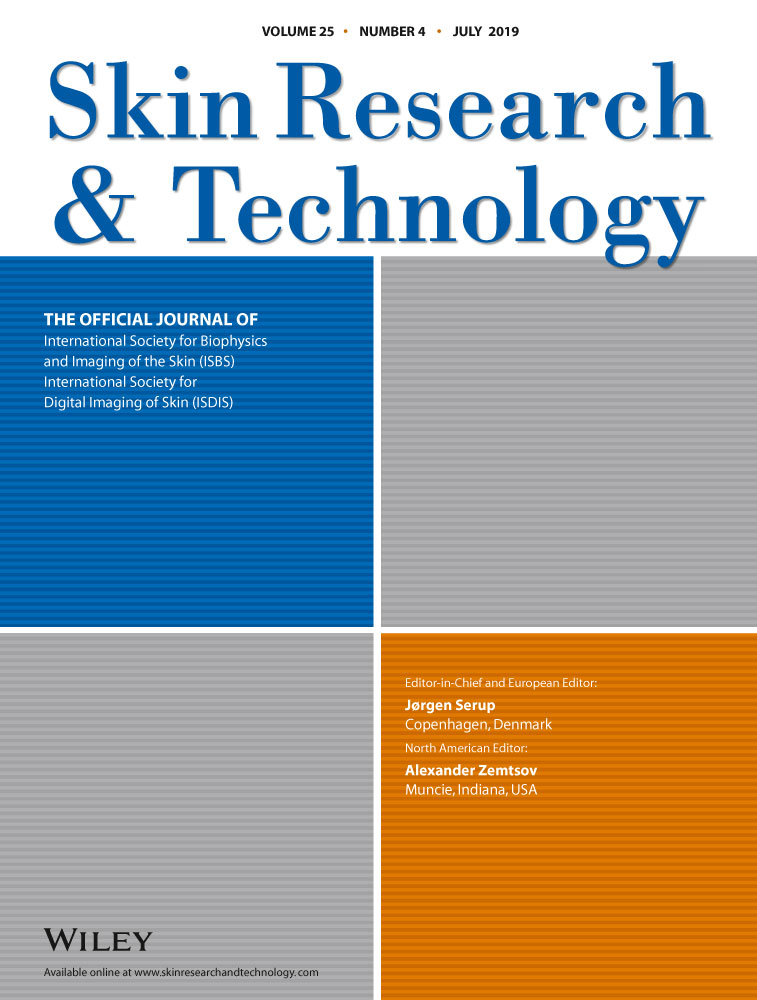Evaluation of different factors influencing objective measurement of skin color by colorimetry
Abstract
Background
Objective determination of skin color has become an essential requirement in managing pigmentary disorders including vitiligo. The readings of available devices can be influenced by factors such as surrounding temperature, vasodilation/constriction, and skin surface properties. Our aim was to investigate the influence of hair color and length, skin stretching, incomplete contact of the device with the skin, and the pressure with which the device is applied to the test area on skin color determination.
Materials and methods
Dermacatch® was used to determine the influence of hair color and length in 30 vitiligo patients, and of wrinkles, incomplete contact of the device with the skin and pressure of the device on the test area in 30 healthy volunteers on melanin and erythema indices measured by the device.
Results
Melanin index was significantly higher in lesions with black hair compared to lesions with white hair (P < 0.001) and the MI significantly decreased when the black hair was shaved (P < 0.001) and when the skin over the test area was stretched (P < 0.001). Incomplete contact of the device with the test area led to significantly higher MI (P < 0.001) and lower EI (P < 0.001). Meanwhile, high pressure induced by the device on the test area led to significantly lower MI (P < 0.001) and significantly higher EI (P < 0.001).
Conclusions
Factors influencing the readings of devices used for objective determination of skin color have to be taken consideration to ensure accuracy of the measurements done.
CONFLICT OF INTEREST
None.




